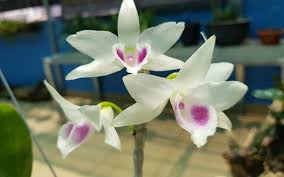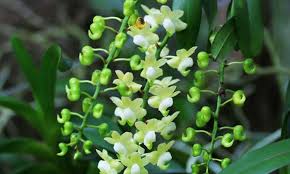
Phalaenopsis orchids, often referred to as moth orchids, are a popular choice among plant enthusiasts due to their stunning blooms and relatively easy care. However, one of the most critical aspects of growing healthy Phalaenopsis orchids is ensuring they receive the right amount of water. Overwatering can lead to root rot, while underwatering can cause stress and wilting. Therefore, employing efficient and water-saving irrigation methods is essential for the health of these beautiful plants. This article explores various irrigation techniques, their benefits, and tips for successful watering of Phalaenopsis orchids.
## Understanding the Water Needs of Phalaenopsis Orchids
Before diving into irrigation methods, it is essential to understand the water requirements of Phalaenopsis orchids. These orchids thrive in environments that mimic their natural habitat—tropical rainforests—where humidity is high, and water is abundant but not stagnant.
### 1. Watering Frequency
The frequency of watering Phalaenopsis orchids depends on various factors, including:
– **Season:** During the growing season (spring and summer), orchids typically require more water, while in the dormant period (fall and winter), their water needs decrease.
– **Environment:** Temperature, humidity, and airflow in your growing area influence how quickly the potting medium dries out. Warmer temperatures and lower humidity levels necessitate more frequent watering.
– **Potting Medium:** The type of potting mix used affects moisture retention. Bark-based mixes drain quickly, while sphagnum moss retains moisture longer.
### 2. Signs of Underwatering and Overwatering
Understanding the signs of improper watering is crucial for the health of your orchids:
– **Underwatering:** Yellowing leaves, wilting, and shriveled roots indicate that your orchid is not receiving enough water.
– **Overwatering:** Darkened, mushy roots, leaf yellowing, and a sour smell from the potting medium can signal overwatering.
### 3. Ideal Watering Conditions
Phalaenopsis orchids prefer to dry out slightly between waterings. The general rule of thumb is to water when the potting medium is about 70% dry. Using methods that promote this ideal moisture level is key to the health of the plant.
## Watering Methods for Phalaenopsis Orchids
### 1. Hand Watering
Hand watering is the most common method among orchid enthusiasts. It allows for careful monitoring of the plant’s moisture needs.
#### How to Hand Water:
– **Frequency:** Check the moisture level of the potting medium by inserting a finger about an inch deep. Water if it feels dry.
– **Watering Technique:** Use room-temperature water and pour it directly onto the potting mix until water drains from the bottom of the pot.
– **Drainage:** Ensure the pot has adequate drainage holes to prevent water from sitting at the bottom.
#### Benefits of Hand Watering:
– **Control:** Allows for direct control over how much water is applied.
– **Observation:** Enables growers to inspect the health of the orchid closely while watering.
#### Considerations:
– Hand watering can be time-consuming, especially for larger collections of orchids.
### 2. Self-Watering Pots
Self-watering pots are designed to provide a consistent moisture level by using a reservoir system.
#### How They Work:
– **Reservoir:** These pots have a built-in water reservoir at the bottom, allowing the orchid to absorb moisture through the drainage holes.
– **Wicking Action:** The potting medium draws water from the reservoir, maintaining a steady moisture level.
#### Benefits of Self-Watering Pots:
– **Reduced Maintenance:** Self-watering pots can reduce the frequency of watering, making them ideal for busy orchid lovers.
– **Consistent Moisture:** Helps prevent the risk of underwatering.
#### Considerations:
– Not all orchids thrive in self-watering pots, so it’s essential to monitor the plant’s health and adjust accordingly.
### 3. Drip Irrigation Systems
Drip irrigation is an efficient method that delivers water directly to the root zone of the plants.
#### How It Works:
– **Setup:** A drip irrigation system consists of a network of tubing and emitters that release water slowly and directly at the base of each orchid.
– **Timer:** Many systems can be automated with a timer, allowing for precise control over watering schedules.
#### Benefits of Drip Irrigation:
– **Water Efficiency:** Reduces water waste by delivering water directly to the roots without runoff.
– **Automation:** Once set up, the system can be programmed to water at specific intervals, ensuring consistent moisture levels.
#### Considerations:
– Initial setup costs can be high, and it may require some technical knowledge to install properly.
### 4. Misting Systems
Misting systems provide moisture to the air surrounding Phalaenopsis orchids, which is beneficial for their humidity needs.
#### How It Works:
– **Misting Units:** These systems spray a fine mist of water at regular intervals, increasing the humidity around the plants.
– **Humidity Control:** Ideal for environments where humidity is low, as orchids thrive in humid conditions.
#### Benefits of Misting Systems:
– **Humidity Regulation:** Helps maintain the high humidity levels orchids require, especially during dry seasons.
– **Cooling Effect:** Provides a cooling effect during hot weather, reducing plant stress.
#### Considerations:
– Misting alone may not be sufficient for watering; it should be combined with another irrigation method.
### 5. Watering by Submersion
Submersion watering is a technique where the orchid pot is submerged in water for a brief period to allow the medium to absorb moisture.
#### How It Works:
– **Submersion:** Place the entire pot (with drainage holes) in a bucket of water for about 10-15 minutes.
– **Drainage:** Allow the pot to drain thoroughly before placing it back in its growing location.
#### Benefits of Submersion Watering:
– **Thorough Moisture:** Ensures even saturation of the potting medium.
– **Ideal for Larger Collections:** Allows for quick watering of multiple pots at once.
#### Considerations:
– Ensure the potting medium is well-draining to avoid waterlogging.
## Water Quality Considerations
The quality of water used for watering Phalaenopsis orchids can significantly impact their health.
### 1. Water Types
– **Tap Water:** Depending on your local water supply, tap water may contain chlorine, fluoride, or hard minerals that can harm orchids. Letting tap water sit for 24 hours can help dissipate chlorine.
– **Rainwater:** Rainwater is ideal for orchids, as it is naturally soft and free from chemicals.
– **Distilled Water:** Distilled water is another good option, as it is free of impurities, though it may lack essential minerals.
### 2. pH Levels
Phalaenopsis orchids prefer slightly acidic to neutral pH levels (around 5.5 to 6.5). Testing the pH of your water can help ensure optimal growing conditions.
## Seasonal Adjustments for Watering
### 1. Spring and Summer
During the active growing season, Phalaenopsis orchids generally require more frequent watering:
– **Frequency:** Check the potting medium every 4-7 days.
– **Conditions:** Higher temperatures and increased light levels will speed up evaporation.
### 2. Fall and Winter
In the dormant period, the watering frequency should be reduced:
– **Frequency:** Check the potting medium every 10-14 days, depending on humidity and temperature.
– **Conditions:** Cooler temperatures and lower light levels reduce water needs.
## Tips for Efficient Watering
1. **Use a Moisture Meter:** A moisture meter can help accurately gauge the moisture level in the potting medium, preventing over- or underwatering.
2. **Observe Your Plants:** Regularly check the leaves and roots for signs of stress or health, adjusting watering practices as needed.
3. **Consider Environment Factors:** Adjust your watering schedule based on environmental changes, such as temperature fluctuations or seasonal shifts.
4. **Water in the Morning:** Watering in the morning allows the plant to absorb moisture before the heat of the day, reducing evaporation losses.
5. **Group Plants:** Grouping your orchids can create a microclimate with higher humidity, reducing the need for frequent watering.
## Conclusion
Efficient and water-saving irrigation methods are essential for maintaining the health and beauty of Phalaenopsis orchids. By understanding the water needs of these exquisite plants and employing various watering techniques—from hand watering to advanced drip irrigation systems—orchid enthusiasts can ensure their plants thrive while minimizing water waste.
With careful observation and adjustments according to seasonal changes, growers can cultivate stunning Phalaenopsis orchids that flourish and bring joy for years to come. Whether you choose traditional watering methods or modern irrigation systems, the key is to create an environment that closely resembles the orchids’ natural habitat, allowing them to thrive in your home or garden.


